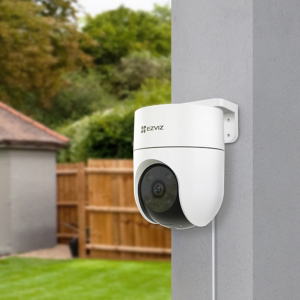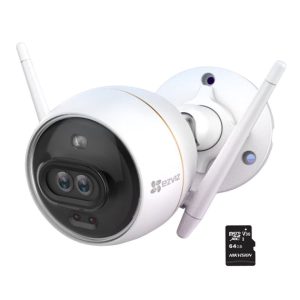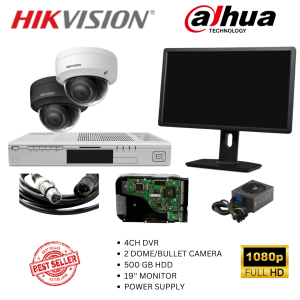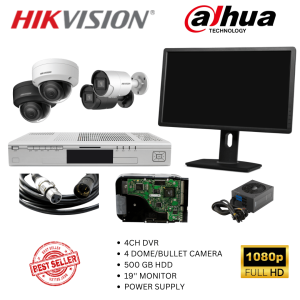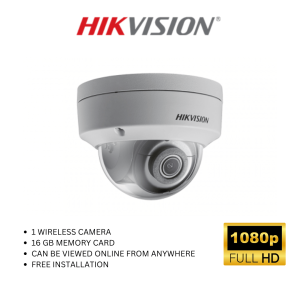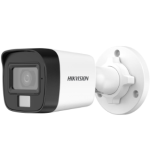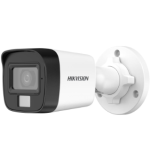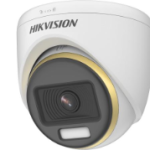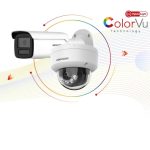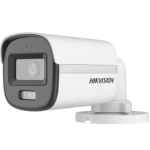CCTV INSTALLATION IN KENYA
At Swemi Tech, we specialize in top-tier CCTV installation services, providing unmatched security solutions tailored to the unique needs of Kenya. Partner with Swemi Tech today and experience peace of mind knowing you’re protected by the best in the industry.
Build Your Dream
5 Years Of Successful Installations
Experience the reassurance of our expertise: over 5 years of delivering seamless CCTV installations across Keny
5
Years of Experience
25+
Trained Technicians
100+
Successful Installations
100%
Customer Satisfaction
In Kenya and East Africa in general, CCTV installation has become an essential security measure for both businesses and homeowners. Swemi Tech offers comprehensive security systems installations tailored to the specific needs of the Kenyan market. The service includes a range of CCTV cameras, each with unique features suitable for different settings and security requirements. With a focus on quality, affordable prices, and customer satisfaction, Swemi Tech positions itself as a reliable and expert provider of CCTV installation in Kenya.

Importance of CCTV Installation in Kenya for businesses and homes
The importance of CCTV installation for businesses and homes in Kenya cannot be overstated. It serves as a crucial tool for ensuring safety and security. For business premises, CCTV cameras act as a deterrent against theft, vandalism, and other criminal activities. They also provide valuable evidence in the event of any security breaches. For homes, these systems offer peace of mind to homeowners, especially in monitoring activities when they are away or for night vision. Overall, CCTV installation is a vital investment for enhancing security, providing surveillance, and fostering a safer environment in both business and residential areas in Kenya & East Africa.

Explore Our Popular Packages
-
CCTV INSTALLATION
Ezviz Smart Home Camera H8C
KSh20,000Original price was: KSh20,000.KSh15,000Current price is: KSh15,000. Add to cart -
CCTV INSTALLATION
Wireless Outdoor Camera
KSh12,000Original price was: KSh12,000.KSh10,000Current price is: KSh10,000. Add to cart -
CCTV INSTALLATION
2 High Definition (HD) Dome/Bullet CCTV Cameras- Full Kit + Installation
KSh40,000Original price was: KSh40,000.KSh30,000Current price is: KSh30,000. Add to cart -
CCTV INSTALLATION
4 High Definition (HD) Dome/Bullet CCTV Cameras- Full Kit + Installation
KSh45,000Original price was: KSh45,000.KSh36,000Current price is: KSh36,000. Add to cart -
CCTV INSTALLATION
8 High Definition (HD) Dome/Bullet CCTV Cameras- Full Kit + Installation
KSh85,000Original price was: KSh85,000.KSh68,000Current price is: KSh68,000. Add to cart -
CCTV INSTALLATION
Nanny Camera + Installation
KSh8,000Original price was: KSh8,000.KSh7,500Current price is: KSh7,500. Add to cart -
CCTV INSTALLATION
Wireless Camera + Installation
KSh10,000Original price was: KSh10,000.KSh8,500Current price is: KSh8,500. Add to cart
Need More Information?
How much does CCTV Installation in Kenya cost?
The table below gives a summary of the average cost for CCTV installation in Kenya.
Why Trust Our CCTV Installation in Kenya?
Swemi Tech is Kenya’s preferred choice for CCTV surveillance cameras due to several key factors:
Expertise and Experience
Swemi Tech has a proven track record of expertise in the field of CCTV installation, with years of experience serving both businesses and homes in Kenya.
Advanced Technology
Swemi Tech uses the latest and most advanced CCTV technology as well as innovative technologies, ensuring high-quality and reliable surveillance.
Customized Solutions
The company offers tailored CCTV solutions to meet the specific security needs of each client.
Professional Installation and Support
The company provides professional installation processes, services, and ongoing support to ensure that CCTV systems function optimally.
Cost-Effective Options
Swemi Tech offers affordable installation costs for CCTV solutions, making high-quality surveillance accessible to a wide range of customers.
Local Understanding
Having operated in Kenya for a considerable time, Swemi Tech has a deep understanding of local security needs and challenges.
What Our Customers Are Saying
See Us in Action
Factors to consider before installing CCTV cameras in Kenya.
Purpose and Requirements: Understand the primary purpose of the CCTV system – whether it’s for general surveillance, theft prevention, or monitoring specific areas.
Camera Types and Features: Choose the right type of cameras (dome, bullet, PTZ, etc.) based on the area to be monitored and required features like night vision or motion detection.
Quality and Resolution: Opt for cameras with suitable resolution and image quality to ensure clear footage.
Location and Coverage: Determine optimal locations for camera placement to maximize coverage and minimize blind spots.
Storage and Access: Consider the storage capacity needed for recordings and the ease of access to footage, possibly via internet-enabled devices.
Legal Compliance: Ensure compliance with Kenyan laws regarding privacy and surveillance.
Budget: Balance the need for quality and features with the available budget.
Professional Installation and Maintenance: Engage a professional CCTV installer for installation and regular maintenance.
Types of CCTV cameras Installed In Kenya
Bullet Vs Dome Cameras
Dome Cameras (Indoor)

Dome cameras, particularly those designed for indoor use, come with several notable features and benefits that make them a popular choice for surveillance:
Discreet Design: The dome-shaped housing of these cameras allows them to blend seamlessly into their surroundings. This makes them less conspicuous compared to other types of security cameras.
Wide Viewing Angle and 360-Degree Coverage: Dome cameras typically offer a broad field of view, allowing them to capture images and videos from multiple directions. This is essential for comprehensive coverage of larger areas when doing CCTV installation in Kenya.
Vandal-Proof Construction: Many indoor dome cameras are built with durable materials and include vandal-proof features such as impact-resistant housing and tamper detection systems.
Advanced Technological Features: These cameras often come with additional functionalities like night vision, motion detection, two-way audio, and remote access through mobile applications. These features enhance their surveillance capabilities.
Night Vision: Equipped with infrared technology, dome cameras can capture clear images in low-light conditions or even in complete darkness, ensuring effective surveillance around the clock.
Versatility in Installation: Dome cameras offer flexible installation options. They can be mounted on ceilings, walls, or poles, making them adaptable to a variety of indoor environments.
High-Quality Video Capture: Dome cameras are known for their high-resolution image capture, which is crucial for clear and detailed footage, aiding in accurate identification and evidence collection.
Smart Analytics: Some models come with AI-based object detection, face detection, audio detection, and other analytics features, enhancing their security and surveillance capabilities.
When choosing a dome CCTV camera, it’s important to consider factors such as the specific purpose of the camera, the required resolution, budget constraints, the lighting conditions of the area to be monitored, and any additional features that may be relevant to your needs.
Bullet Cameras (Outdoor)
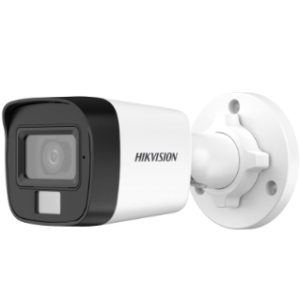
Bullet cameras, particularly designed for outdoor surveillance, offer a range of features that make them an effective choice for security needs. Here are some of their key features and advantages:
Weatherproof Design: Bullet cameras are built with weather-resistant construction, often featuring waterproof housings. This makes them suitable for various outdoor conditions, ensuring reliable performance in different weather scenarios.
Larger Lenses: The distinct, elongated shape of bullet cameras allows them to accommodate larger lenses. This is particularly beneficial for surveillance over longer distances, as it can provide higher levels of detail.
Ease of Installation: They are known for being easy to install, often coming with mounting brackets for quick setup on walls, ceilings, or other surfaces.
Visible Deterrence: The noticeable design of bullet cameras can act as a deterrent to potential intruders, as their presence is easily recognized.
Night Vision Capabilities: Many models are equipped with infrared LEDs, providing clear visibility in low-light or completely dark conditions, and enhancing 24/7 monitoring.
Fixed Lens: Typically, bullet cameras have a fixed lens, offering a predetermined field of view, which simplifies the installation and setup process.
Versatility: Originally designed for outdoor use, these cameras can also be effectively used indoors, particularly in scenarios where a visible security presence is important.
High-Resolution Imaging: Bullet cameras often come with advanced image sensors that allow for crisp and clear video footage, capturing crucial details like facial features or license plate numbers.
License Plate Recognition: Some bullet cameras are ideal for license plate recognition (LPR), particularly useful in traffic management and parking lot surveillance.
Adjustable Viewing Angles: Some models offer varifocal lenses allowing manual adjustment of the focal length for flexibility in different surveillance scenarios.
These features collectively make bullet cameras a robust option for outdoor surveillance, offering durability, ease of CCTV installation in Kenya, and effective monitoring capabilities. They are suitable for various applications, including monitoring large open spaces, parking lots, and building exteriors.
HD Cameras
HD CCTV cameras offer a range of features that make them an excellent choice for both commercial and residential security needs. Here are some key features of HD CCTV cameras:
High Definition Imaging: HD CCTV cameras are known for their clear image quality. They capture images in high detail, which is crucial for identifying people or objects over long distances. This high-definition imaging is a significant step up from standard-definition cameras.
Flexibility in Installation: These cameras often use Siamese coax cables, which allow for easy CCTV installation in Kenya. The Siamese coax cable is versatile, aiding in more flexible setup options. They can be used as both indoor cameras and outdoor cameras
All-in-One Power and Video Cable: One of the convenient features is the integration of power and video in a single cable. This design simplifies the installation process by reducing the number of cables needed and helps in maintaining a cleaner setup.
Advanced Video Recording: HD over coax DVRs (Digital Video Recorders) are used with these cameras to provide advanced recording capabilities. They allow for the recording, playback, and storage of high-definition footage, all transmitted over coaxial cables without losing image quality.
Infrared Night Vision Capabilities: Many HD CCTV cameras come equipped with infrared night vision, allowing for clear footage even in low-light conditions. This feature is essential for round-the-clock surveillance.
Wide Angle View: Some models come with lenses that provide a wide-angle view, ensuring broader coverage of the monitored area.
Weather Resistance: These cameras are often built to withstand various weather conditions, making them suitable for both indoor and outdoor use.
Remote Surveillance Options: Many HD CCTV systems can be connected to the internet, enabling remote viewing of live or recorded footage on smartphones, tablets, or PCs.
Long Transmission Distances: They are capable of transmitting video over long distances, which is beneficial for large properties or complex installation environments.
Cost-Effectiveness: HD over coax systems are generally more affordable than IP/CAT5/6 systems, making them a viable option for those who want high-quality CCTV installation in Kenya without a significant investment.
HD Night Vision Hybrid Cameras, such as the Hikvision Smart Hybrid Light Cameras with ColorVu, offer a range of advanced features designed to enhance night vision capabilities in various settings. These are a good option for those looking for CCTV installation in Kenya. Here are some of their key features:
Smart Hybrid Light Technology: These cameras come with built-in lighting that enables clear visibility in low-light or dim light environments. They overcome the limitations of conventional IR cameras that provide black-and-white images, often losing details. They also address the constant issue of white light cameras.
Three Night-Vision Modes: The cameras offer three modes for night vision:
- IR Mode: Infrared light is always on, providing black and white images at night.
- White Light Mode: Continuous white light for colour imaging and night vision footage 24/7.
- Smart Mode: Utilizes IR light when no target is present and switches to white light when a target appears, offering vivid colour imaging with clear details
Super Confocal Technology with F1.0 Super Aperture: This technology ensures clear and steady imaging without defocusing when switching from colour to black and white. It provides sharp imaging in both IR and visible light.
AcuSense-Powered Smart Functions: These functions include Motion Detection 2.0, which can distinguish between persons and vehicles, focusing on real security threats. Live Guard (IP) provides visual and auditory warnings while sending notifications remotely.
Versatile Application: The cameras are suitable for various environments like warehouses, retail shops, residences, and city streets, adapting their lighting according to the situation.
ColorVu Technology: Ensures high-quality CCTV surveillance, full-colour video 24/7, capturing every detail with precision.
High-Definition Imaging: Available in different body styles (bullet, turret, dome), these cameras provide high-definition imagery with resolutions up to 4K.
Smart Perimeter Protection: With human and vehicle detection, these cameras enable fast and efficient video searches.
Integration Capabilities: The cameras can be integrated with third-party applications through the Hikvision Embedded Open Platform (HEOP), enhancing the user experience.
Here are some pictures of HD Night Vision Hybrid Cameras
HD Full Color Night Vision Cameras
HD Full Color Night Vision Cameras offer a range of advanced features designed to enhance security and surveillance, especially in low-light conditions. Here’s a summary of their key features:
High Resolution: These cameras typically have high resolutions, such as 1080p or higher, ensuring better image quality with more visible details. A higher resolution is crucial for identifying potential suspects or objects even in low-light environments.
Long Range: They can see further in ambient lighting conditions. Opting for long-range colour night vision cameras is recommended to capture subjects or objects at a distance.
Large Aperture: Cameras with a larger aperture, like the ColorX night vision technology featuring F1.0 aperture, allow more light to enter the lens, resulting in brighter and clearer images.
3D DNR (Digital Noise Reduction): This technology reduces image noise in both static and moving images, enabling clearer images and more accurate details.
Wide Dynamic Range (WDR): Cameras with WDR technology can balance light for improved images and videos, ideal for high-contrast lighting locations.
IR Cut Filter: Ensures true color reproduction in varying lighting conditions for high-quality images and videos.
Field of View: A larger field of view means that the camera can cover wider areas. This is essential if you need to monitor large spaces with a single camera.
Integration with AI: AI integration enhances the capabilities of these cameras by identifying objects, people, or vehicles in low-light environments, enabling intelligent monitoring and alerting.
Enhanced Image Processing: Advanced algorithms are used to reduce noise, enhance contrast, and correct colors for clearer and more vibrant images.
Utilization of Ambient Light: These cameras use available ambient light sources to capture detailed and colorful visuals, even in faint light conditions.
IR Illuminators: Some models incorporate IR illuminators to provide necessary illumination in complete darkness.
Smart Features: Many color night vision cameras come with additional smart features like motion sensors, sound alarms, and spotlight WiFi connectivity, enhancing security and convenience.
These features make HD Full Color Night Vision Cameras a powerful tool for security, providing clearer and more detailed images at night compared to traditional monochrome night vision cameras. They are particularly valuable for outdoor CCTV installation in Kenya, offering enhanced visibility and detail recognition in low-light conditions.
IP Cameras
IP (Internet Protocol) cameras are a type of digital video camera commonly used for surveillance. They differ from analog closed-circuit television (CCTV) systems in that they can send and receive data via a computer network and the Internet. IP cameras are the higher end option you want to do CCTV installation in Kenya. Here are some of their key features:
High-Quality Video Resolution: IP cameras typically offer higher video resolution compared to traditional analog cameras. This results in clearer, more detailed images, which is crucial for identifying faces or license plate numbers.
Remote Viewing and Control: One of the primary advantages of IP cameras is the ability to access and manage them remotely. Users can view live footage or access recorded videos from any location via the internet.
Network Connectivity: These cameras connect to your network, either via Ethernet cable or wirelessly. This allows for easier scalability and integration into existing network infrastructures.
Advanced Recording Features: IP cameras often come with built-in NVR (Network Video Recorder) functionalities or support for cloud storage, enabling efficient data management and storage.
Motion Detection and Alerts: Many IP cameras are equipped with motion detection capabilities. They can send alerts to the user via email or a mobile app when movement is detected.
Night Vision: Equipped with infrared LEDs, IP cameras can capture clear video footage even in low-light or night-time conditions.
Two-Way Audio: Some models feature two-way audio, allowing users to listen and speak through the camera, which is particularly useful for surveillance in areas like entry points or customer service environments.
PoE (Power over Ethernet): PoE capability allows the camera to receive both power and data over a single Ethernet cable, reducing installation complexity and cost. This feature is mostly recommended for large scale installations.
Wide Dynamic Range (WDR): This feature helps the camera to balance the lighting in scenes with high contrast, ensuring that both bright and dark areas are visible.
Onboard Analytics: Advanced IP cameras come with built-in analytics like facial recognition, license plate recognition, and object tracking, enhancing security measures.
These features make IP cameras a versatile and effective choice for a comprehensive surveillance system. Take note though- IP cameras have higher installation costs
Here are some pictures of IP Cameras
IP Full Color Night Vision Cameras
IP Full Color Night Vision Cameras come with a range of features that make them effective for surveillance in low-light conditions. Here are some key features:
Starlight Image Sensors: These sensors are highly sensitive to light, allowing the camera to perform well in low-light areas. They enable the camera to capture color footage in dim settings, which is a significant advantage over regular surveillance cameras that switch to black-and-white mode in low light.
Resolution: Higher resolution in these cameras results in better image quality. Cameras with at least 1080p resolution are recommended to capture clear and detailed images.
Range Coverage: It’s important to know the range a camera can cover. Full-color night vision cameras may have different range capabilities, and this should be considered based on the surveillance needs.
Large Aperture: Cameras with a large aperture, such as F1.0, allow more light to enter the lens, producing brighter and clearer images, especially in low-light environments.
3D DNR (Digital Noise Reduction): This technology reduces image noise in both static and moving images, enhancing the clarity of the footage.
Wide Dynamic Range (WDR): Cameras with WDR can balance light for improved images and videos, making them ideal for high-contrast lighting locations.
IR Cut Filter: This ensures true colour reproduction in the cameras, providing high-quality images and videos with both day and night.
Field of View: A larger field of view means wider area coverage by the camera. This is crucial if you need to monitor large areas with a single camera.
Integrated Spotlights/Floodlights: Some models come with built-in lighting solutions like spotlights or floodlights, enhancing visibility in low-light conditions. Motion-triggered lights can be more energy-efficient but may have range limitations.
Ambient Light Level Sensitivity: The camera’s ability to switch modes (colour vs. IR) depends on the ambient light level, with the “minimum illumination for colour value” metric indicating how much light is needed for the camera to produce full-colour footage.
These features make IP Full-Color Night Vision Cameras a versatile choice for various surveillance needs, offering clear, detailed, and colour-accurate footage even in low-light conditions.
IP Night Vision Hybrid Cameras.
IP Night Vision Hybrid Cameras, particularly those equipped with Smart Hybrid Light technology like the Hikvision’s Smart Hybrid Light Cameras with ColorVu, offer advanced features for enhanced night-time surveillance. Here are some of their key features:
Versatile Lighting Modes: These cameras provide three night-vision modes – IR mode, white light mode, and smart mode. This allows users to select the ideal lighting mode for their specific needs and environment.
Superior Low-Light Performance: The ColorVu technology in these cameras ensures vivid and detailed images both during the day and at night. The advanced sensors and F1.0 super-aperture guarantee excellent colour imaging even in ultra-low light conditions.
Adaptive Smart Hybrid Lighting: The cameras adapt their lighting modes to suit various environments. This includes vibrant 24/7 full-colour imaging, crisp black-and-white IR imaging, and adaptive Smart Mode that intelligently switches between IR and color imaging during critical events.
Enhanced Imaging Technology: The Super Confocal technology with F1.0 Super Aperture provides splendid night vision and ensures clear, steady imaging without defocusing when switching from colour to black & white.
Smart Security Functions: These cameras are enhanced with AcuSense-powered smart functions for data analysis. They can effectively identify human or vehicle targets in true colour, with Motion Detection 2.0 distinguishing persons and vehicles from other objects, focusing on real security threats.
Eco-Friendly and Efficient: In Smart Mode, the camera uses only the IR light (which is invisible to the human eye and eco-friendly) when there is no target in the area. When a target appears, the camera automatically triggers the white light for vivid color imaging with clear detail.
HD Full Color Night Vision Cameras
IP Full Color Night Vision Cameras come with a range of features that make them effective for surveillance in low-light conditions. Here are some key features:
Starlight Image Sensors: These sensors are highly sensitive to light, allowing the camera to perform well in low-light areas. They enable the camera to capture color footage in dim settings, which is a significant advantage over regular surveillance cameras that switch to black-and-white mode in low light.
Resolution: Higher resolution in these cameras results in better image quality. Cameras with at least 1080p resolution are recommended to capture clear and detailed images.
Range Coverage: It’s important to know the range a camera can cover. Full-color night vision cameras may have different range capabilities, and this should be considered based on the surveillance needs.
Large Aperture: Cameras with a large aperture, such as F1.0, allow more light to enter the lens, producing brighter and clearer images, especially in low-light environments.
3D DNR (Digital Noise Reduction): This technology reduces image noise in both static and moving images, enhancing the clarity of the footage.
Wide Dynamic Range (WDR): Cameras with WDR can balance light for improved images and videos, making them ideal for high-contrast lighting locations.
IR Cut Filter: This ensures true colour reproduction in the cameras, providing high-quality images and videos with both day and night.
Field of View: A larger field of view means wider area coverage by the camera. This is crucial if you need to monitor large areas with a single camera.
Integrated Spotlights/Floodlights: Some models come with built-in lighting solutions like spotlights or floodlights, enhancing visibility in low-light conditions. Motion-triggered lights can be more energy-efficient but may have range limitations.
Ambient Light Level Sensitivity: The camera’s ability to switch modes (colour vs. IR) depends on the ambient light level, with the “minimum illumination for colour value” metric indicating how much light is needed for the camera to produce full-colour footage.
These features make IP Full-Color Night Vision Cameras a versatile choice for various surveillance needs, offering clear, detailed, and colour-accurate footage even in low-light conditions.
How Does A CCTV System Work?
If you are looking for CCTV installation in Kenya, it is important to understand how it works. A CCTV surveillance system operates by transmitting signals from security cameras to a specific place, such as a DVR/NVR, and then displaying the footage on a screen or making it accessible via smartphones. Here’s a step-by-step explanation of how a typical CCTV system works:
Cameras: CCTV systems start with cameras, which are strategically placed for surveillance. These cameras capture video footage of their field of view. Cameras vary in type (like dome, bullet, PTZ), capabilities (like night vision, motion detection), and connectivity (wired or wireless).
Cabling: In a wired CCTV system, coaxial cables or Ethernet cables are used to connect cameras to the DVR/NVR. Coaxial cables are typically used with analog cameras, while Ethernet (CAT5 or CAT6) cables are used with IP cameras. Wireless systems, on the other hand, transmit video signals over Wi-Fi, reducing the need for physical cabling.
DVR/NVR:
- DVR (Digital Video Recorder): Used with analog cameras, a DVR converts the analog video signals into digital format and stores them on a hard drive. The DVR also provides options to view live and recorded footage, as well as manage the cameras.
- NVR (Network Video Recorder): Used with IP cameras, an NVR receives digital video data over the network and stores it. NVRs typically offer higher resolution recording and more advanced features compared to DVRs.
Storage: Both DVRs and NVRs contain hard drives for storing video footage. The storage capacity can vary, and it often determines how much footage can be recorded before older videos are overwritten.
Viewing and Monitoring:
- Local Viewing: For local viewing, a monitor or TV screen is connected to the DVR/NVR via HDMI or VGA cables. This setup allows live viewing of camera feeds and access to recorded footage.
- Remote Viewing: Many modern CCTV systems offer remote viewing capabilities. This is achieved through a network connection, allowing the DVR/NVR to be accessed via smartphones, tablets, or computers. Users can view live feeds, play back recorded footage, and manage system settings through dedicated apps or web interfaces.
Internet Connectivity: For remote viewing and some advanced features (like email alerts), the DVR/NVR needs to be connected to the internet. This is typically done via an Ethernet cable to a router.
Power Supply: Each component of the CCTV system requires power. Cameras may be powered individually (usually through a power adapter), or through a centralized power source like a PoE (Power over Ethernet) switch, especially in the case of IP cameras.
In summary, a CCTV system captures video through cameras, transmits this data to a DVR/NVR for processing and storage, and then allows for both local and remote viewing. The system’s effectiveness in surveillance largely depends on the proper setup and configuration of these components.
Work With Swemi Tech
Ready to fortify your security and embrace sustainable energy solutions?

